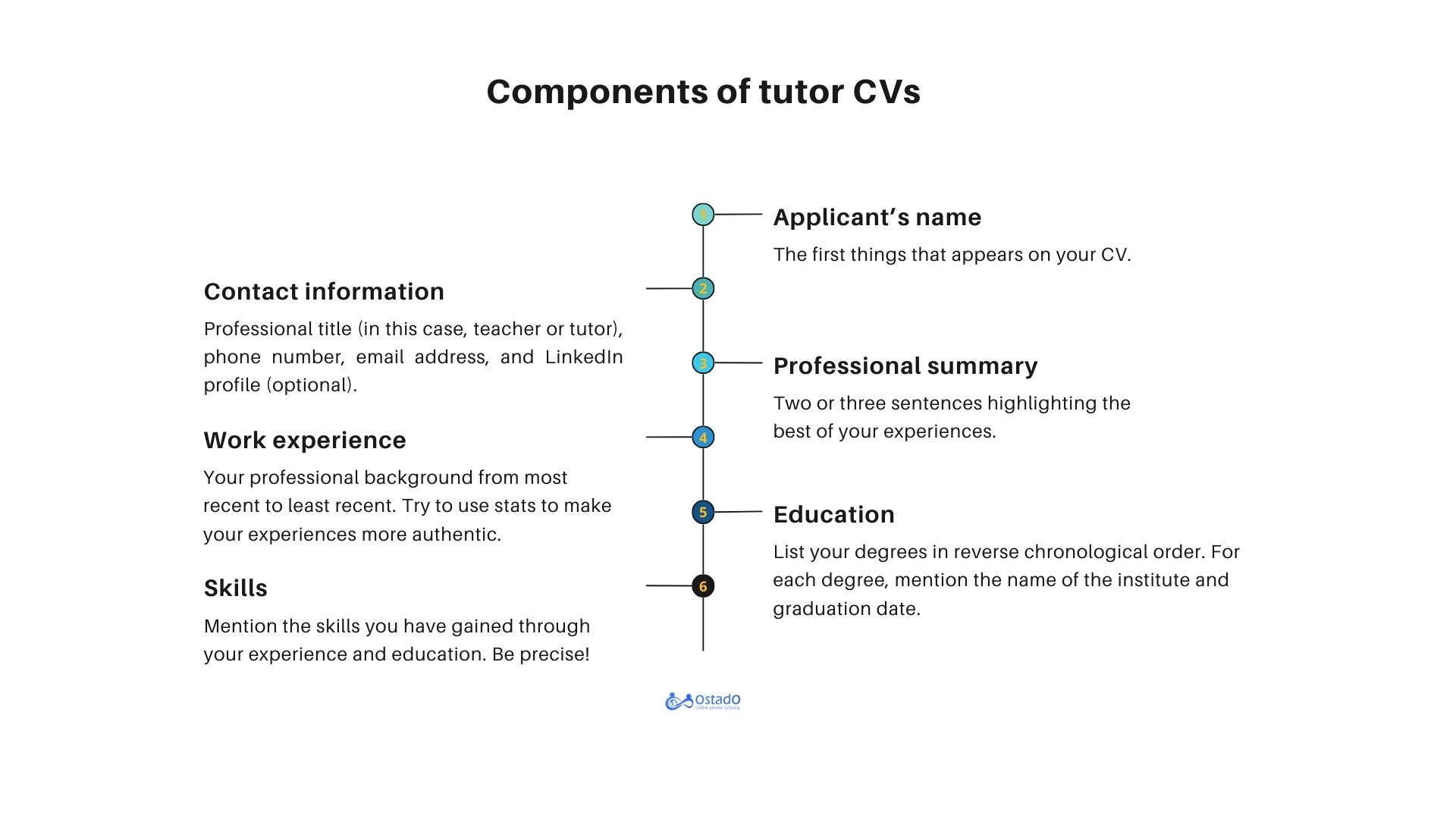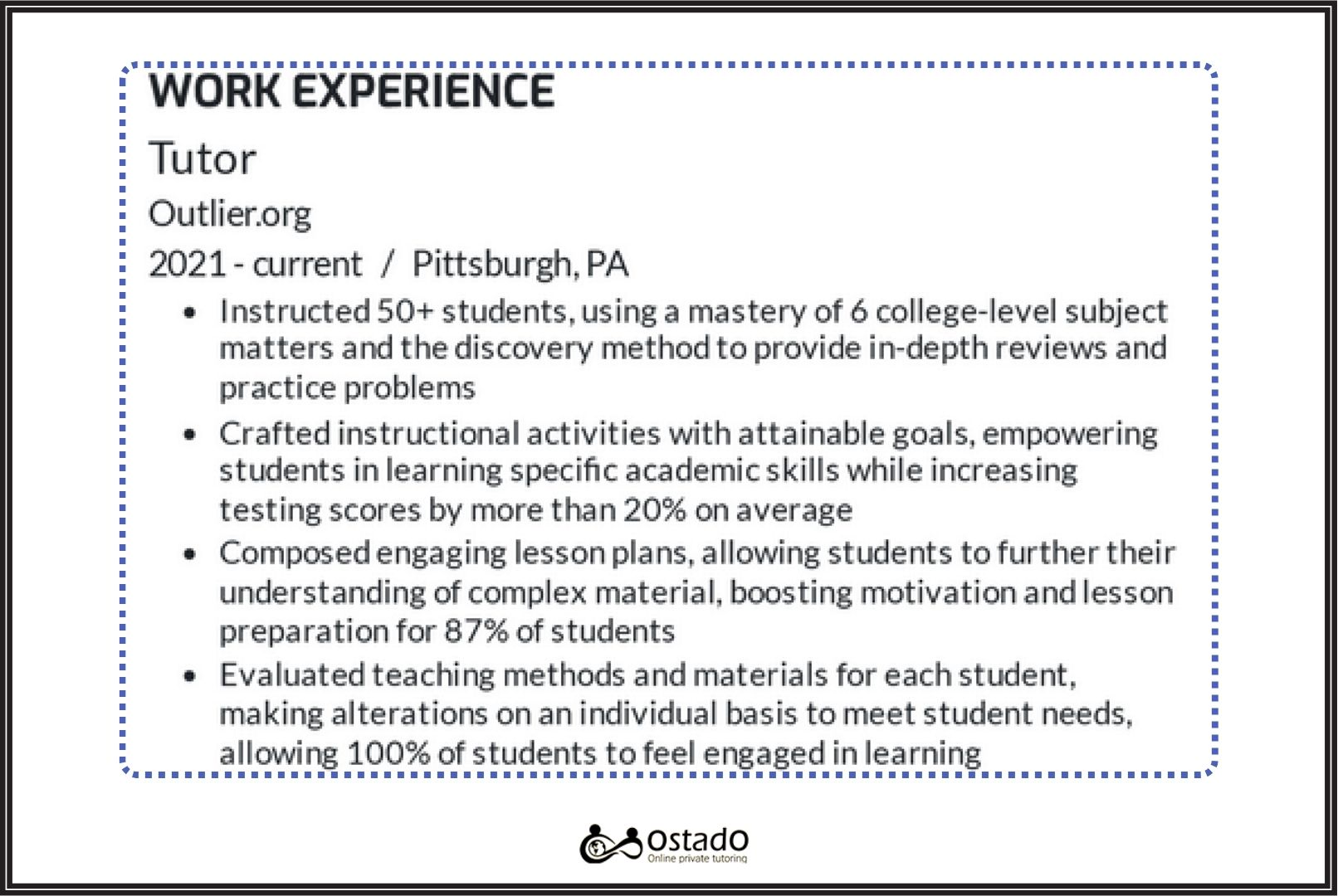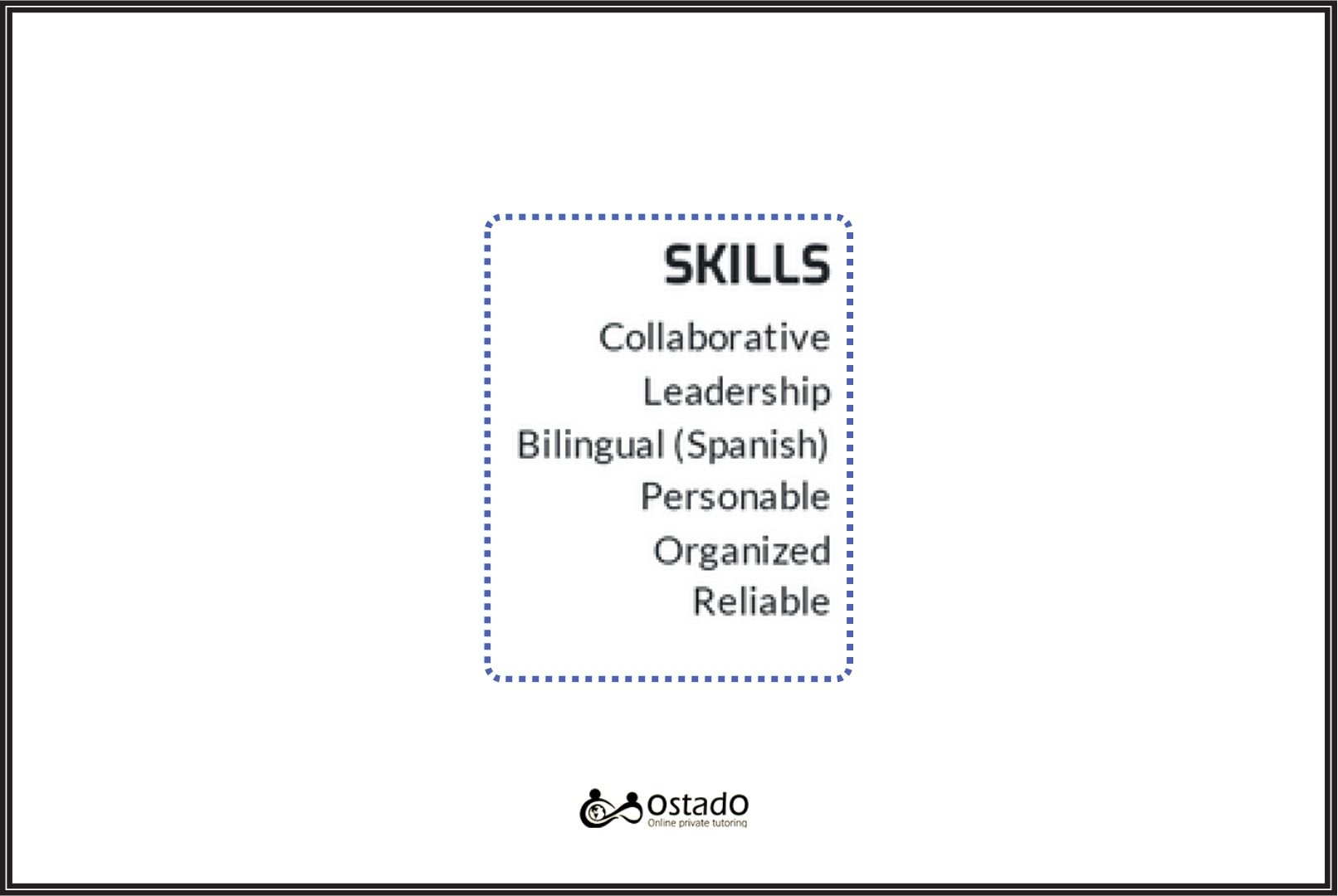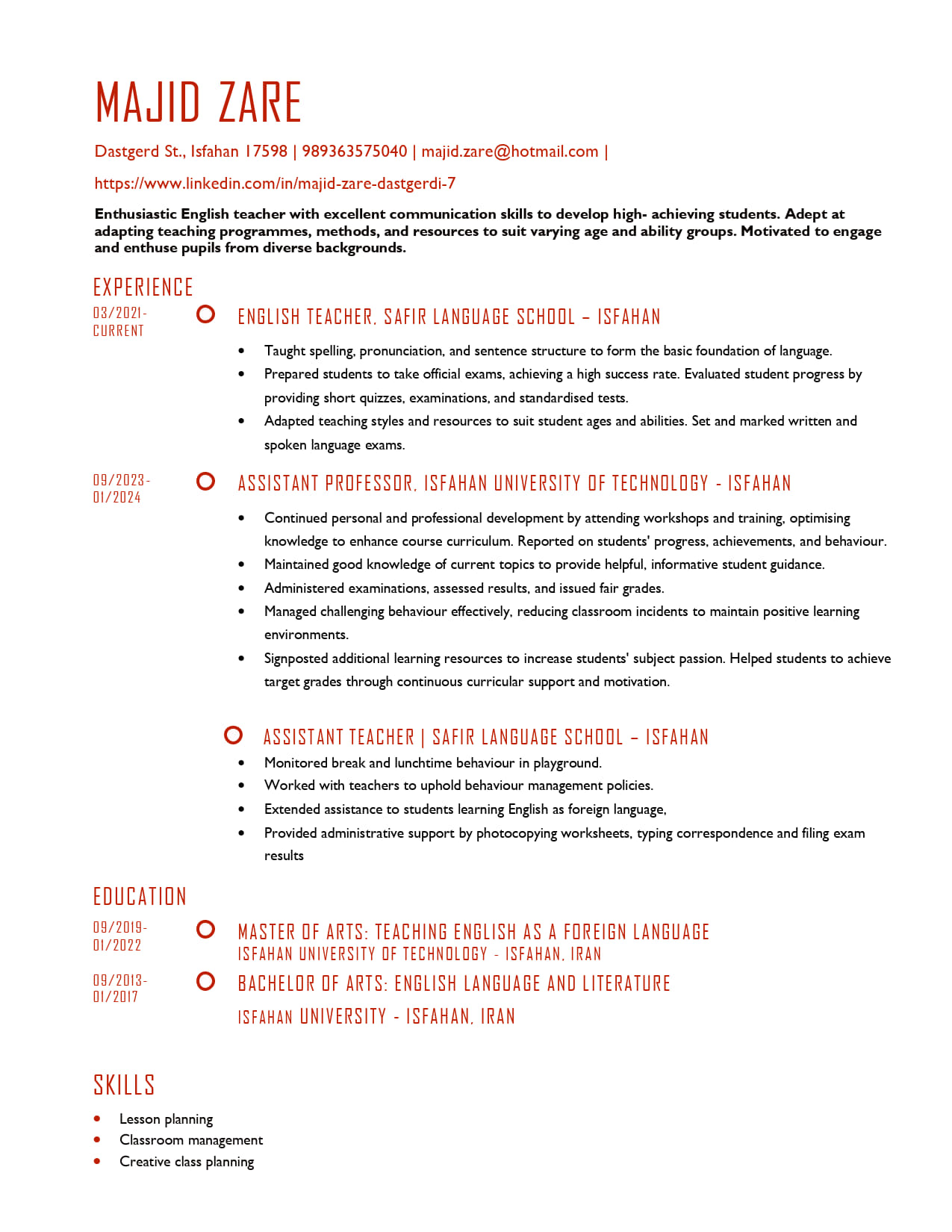After years of education and hours of training, you think it’s payback time; well, maybe in a perfect world. But here and now, being able to showcase your expertise and promote your qualifications is just as important as gaining them.
Your CV is where all your efforts boil down to, and unless you represent yourself properly and adequately, you can’t get the most out of your expertise and qualifications. So, let’s take a look at a tutor CV example to understand how to build one practically.
CV vs. Resume: What’s the Real Difference?
Before we get to the composition of a standard CV, let’s briefly go over how it differs from a resume. A CV and a resume are documents prepared for job applications, and they are sometimes used synonymously. However, these documents are slightly different.
In fact, in Canada and the US, a resume and a CV refer to different documents. In European countries like the UK and New Zealand, people use the term CV to refer to resume-style documents, and the term “resume” is not common. Let’s take a quick look at the differences between a CV and a resume.
- Size: A resume is one or maximally two pages long, but a CV does not have a fixed size; its length depends on the applicant’s job history.
- Content: the descriptions in the resume are carefully selected for a particular job, but the CV is more general and contains all records pertaining to the applicant’s background experiences.
- Career type: a resume is commonly used to apply for industry jobs, while a CV is more common in the academic domain. CVs are often used to apply for research programs and fellowships.
- Modifiability: the details in a resume change frequently according to the job description in the job advertisement. However, the information in a CV is somewhat fixed. Of course, you can always add information about your new experiences to the resume.
Now that you know the difference between a CV and a resume, you might realise that a resume is what you need. If so, check out our article on “Tutoring Resume Examples” for helpful tips.
Essential Components of a Private Tutor CV

1. Contact Information
The first thing that goes after your name and job title in the CV is your contact information. You need to include your location, phone number, and email address. If
You can also add a touch of modernity to your CV by embedding a QR code to your contact information. This can be linked to your LinkedIn page, video resume, or anything you want it to. Plus, it helps your CV stand out.

2. Professional Summary
This is a short paragraph describing in a nutshell what you have achieved and what you aim to achieve. The paragraph is three or maximally four sentences long, and the sentences do not start with the subject.
The professional summary is an excellent place to give quantitative information about your success as a tutor. For instance, you can mention details about the number of students you have tutored, how much their grades improved, how many sessions you’ve held, and how many lesson plans you’ve designed.
The professional summary is your chance to hook the recruiters to read the rest of your CV. One thing you can do to hook the employer is to use relevant and robust words. Watch this video on YouTube to learn how to integrate keywords from the job description in your CV.

3. Experiences and Job History
As mentioned earlier, the CV is not as specific as the resume, so you can include all your professional records here, but you must prioritise the relevant ones. If there is enough space, you can mention other experiences as well.
Listing the experiences should be in reverse chronological order, and you should mention the job title, the company or institute, and the start and end date of your experience there.
Relevant experience is an assuring factor for the employer. It indicates if you are fit for the job or not. But can you find a tutoring job without experience? The short answer is yes. Click on “How To Become an Online Tutor With No Experience” to learn more.
Become a Tutor at Ostado
Ostado is a leading online tutoring platform in the UK, but we’re not picky about our tutors’ background experience or tutoring licence. What matters to us is intensive knowledge in the field you want to teach and the ability to transfer your knowledge to your students effectively and engagingly. If you’ve got that, don’t hesitate to join us. Become a tutor at Ostado now and change someone’s life.

4. Educational Background
When relevant to the job description, the education section compels the employer to consider your CV, and you will at least get an interview. Your skills and knowledge about what you aim to do depends on your education and, of course, place of graduation.
In this section you need to list your degrees from most recent to least recent, followed by your major, name of the university, and time of graduation. If you have other certifications, you can also list them here. However, if you want to place more emphasis on them, you can add a separate section after “Skills” to list your certifications, licences, and relevant qualifications.
If you have a certificate but it’s not related to tutoring, you can skip it in the CV. Add the Certificate section only if you have something to offer in the education domain. For instance, a certificate in graphic design is better left unsaid.
5. Skills and Abilities
This is where you list your soft skills. The key to writing this section is to prioritise the relevant skills to what you said in your work history. It makes your claims justified. For a tutor, skills like critical thinking, classroom management, and lesson planning can get the recruiters interested in your case.
If you don’t have a presentable background in tutoring, you can enrol in tutor training courses and earn a tutoring certificate to increase your chances of getting hired. Click here to learn more about “How To Become a Certified Tutor.”

Tutor CV Example Layout

Download Tutor CV Templates
Practical Tips To Make Your CV Shine
1. Keep It Short
I said earlier that a CV is longer than a resume, but you should still be frugal with words. Try to use industry-related terminology to boost the content of the CV.
2. Avoid Typical CV Cliches
Words and expressions like “Team Player, Hard Worker, Self-motivated, Go-getter, etc.” are overused in CVs, and they just do not have the effect they used to have. You should replace these cliches with more authentic, exact, and measurable descriptions.
For instance, in the CV summary, instead of using “Flexible and adaptable,” you can say, ” Adapted teaching methods to online learning during the COVID-19 pandemic, engaging students in the learning process and promoting online student-student interactions.” This sentence actually conveys something about your communication skills to the employer, makes your claims more authentic, and proves your expertise in your job.
3. Make your CV eye-friendly
Hiring managers spend less than 10 seconds scanning your work history. You have to make it easy for the manager to go through your work history by using bullet points and indentation.
4. Show off Your Achievements
When explaining your experiences, put your achievements under the spotlight. Since it is a CV we are writing, you do not need to worry if the achievement is relevant to the job offer. So, do not be modest when it comes to achievements because it may cost you a good position.
5. Keep It Formal
Obviously, you cannot use an informal tone in your CV and it is best if you avoid contractions. Also, employ an active voice when writing different parts of the resume, especially in the CV summary. But aside from the formal language, you should keep the appearance formal as well by using the following measures:
- A4 paper size.
- Preferable fonts: Times New Roman, Calibri, Arial, Helvetica
- Font size: 10-12 pt for body texts, 14-16 pt for headings, and 28-35 pt for your name.
- Colours: you can use one or maximally two colours other than black to decorate your CV and make it more readable. Do not use very bright or flashy colours. Burgundy and navy blue are examples of appropriate colours to use in your tutor CV.
6. Avoid Using Old-fashioned CV Components
A profile picture used to be shared in CVs, but nowadays, it is advised to remove the profile from the CV because it can act as an irrelevant factor in your employment or cause bias and discrimination due to age, race, and appearance.
Additionally, there is no need to include references in your CV unless asked for in the job description. Save the space for other sections of the CV.
7. Reread and Read Again
Typos, spelling, and grammatical mistakes are bad in any CV, but in a tutor’s CV, it is mortifying. So, make sure to proofread your resume before you send it. You can also ask someone else to give it a look or use proofreading tools such as Grammarly to make sure there are no mistakes.
8. Choose Appropriate File Name and Format
As you finish and revise the CV, you end up with several files that are either dated, numbered, or labelled to tell you which is which. Remember to remove these version numbers from the file name before you send the CV. MajidZare_CV is a good example of the CV file name.
Moreover, your CV file may get distorted when the hiring manager opens it on their computer. To prevent that from happening, convert the file into .pdf format.
Alright! You’re all set to build an impressive CV. Next stop: How To Advertise Yourself as a Tutor.
Key Takeaways for Tutor CV Example
- You can have a more extensive description of your background in a CV than in a resume.
- You should include details about your education, relevant education, skills, and certifications (if any).
- The CV should be too long.
- Be your genuine self and avoid cliches.
- Use bullet points to make your CV more readable.
- Build on your achievements, especially in the Professional Summary section.
- Use formal language and format for the CV.
- Remove unhelpful sections, e.g., unrelated licences.
- Proofread the resume.
FAQ - Tutor CV Example
- What makes a good tutor?Subject expertise and experience, approachable and friendly, focused and devoted, flexible and understanding are some of the qualities that make a good tutor. For the complete list, click on "What makes a good tutor?"
- Is tutoring considered a skill?Tutoring is more than a skill. It is a profession involving lots of hard and soft skills. You can learn more about these skills in "Requirements to be a Tutor."
- How much do tutors earn in the UK?According to numbers from PayScale, the tuition fee in the UK is £15 an hour on average. Factors such as the tutor's experience, subject complexity, and location affect the tuition fee.

